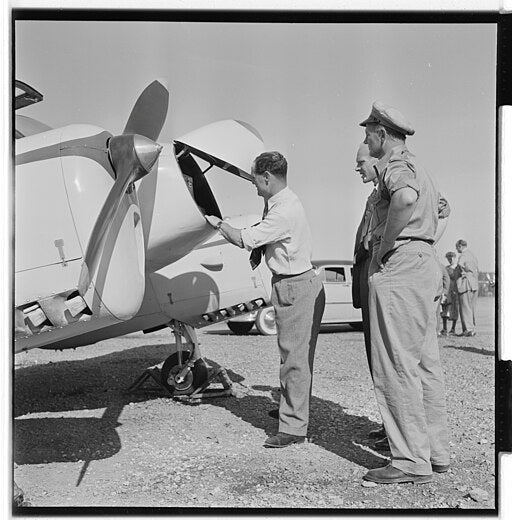Douglas Bader comes to mind when we speak of individuals who personify courage, resilience, and a relentless spirit. His life was marked by a series of extraordinary events that set him apart as a remarkable fighter pilot and a man of unwavering resolve.
Joining the Royal Air Force
Born on February 21, 1910, in London, England, Bader joined the Royal Air Force in 1928. His passion for flying and natural aptitude for aviation was evident from the start. However, his promising career took a tragic turn on December 14, 1931, when a flying accident resulted in both his legs being amputated. Despite this life-altering event, Bader’s spirit remained unbroken. He refused to let his disability define him and resolved to fly again.
Defying all odds, Bader was one of the few men in history to return to active service in the military with a disability as severe as his. He was fitted with artificial legs, and after a period of adjustment, he retrained himself to fly. He demonstrated that his skills had remained strong, proving that determination and courage could overcome the most daunting obstacles.
When the Second World War broke out in 1939, Bader was ready to serve and led from the front. He was a prominent fighter pilot during the Battle of Britain, credited with multiple victories. His tactical acumen and leadership skills were instrumental in shaping the “Big Wing” strategy, a controversial yet impactful tactic that involved deploying large formations of fighters against the German Luftwaffe.
Prisoner of War
Bader’s war career stopped in August 1941 when he was shot down over German-occupied France and taken as a prisoner of war. But captivity did little to dampen his indomitable spirit. He attempted to escape from the prison camp multiple times, forcing Germans to shift him frequently between different camps.
Later Years
After the war, Bader took up the cause of the disabled. He championed the rights of amputees and worked tirelessly to improve their living conditions. He often visited hospitals to meet with people who had lost limbs, sharing his own experiences and providing them with hope and inspiration.
Bader passed away on September 5, 1982, leaving a legacy of courage, resilience, and tenacity. His life is a testament to the human spirit’s capacity to overcome adversity. His story inspires millions worldwide, reminding us all that no obstacle is too significant to overcome when met with unwavering determination.
Douglas Bader was not just a decorated fighter pilot but a beacon of hope and a symbol of resilience. His life story will remain a shining example of the human spirit’s unyielding strength.
What was Douglas Bader like as a person?
Douglas Bader was known for his indomitable spirit and tenacity, which were significant aspects of his personality. He was also known for his self-confidence and strong will, which allowed him to overcome his disability and return to active service in the RAF.
Bader was known for his courage and leadership skills, both in the air and on the ground. He firmly believed in the “Big Wing” strategy during the Battle of Britain, and his tactical acumen and leadership contributed to its implementation, even in the face of controversy and opposition.
Bader was also known for his resilience. His determination to overcome his disability and continue flying and his numerous attempts to escape while he was a prisoner of war attest to his never-give-up attitude.
Despite his remarkable achievements and courage, Bader was also known to be stubborn and could be abrasive. He was forthright with his opinions and did not shy away from conflict, traits that sometimes rubbed people the wrong way.
After he retired from the RAF, Bader dedicated his life to advocating for people with disabilities. He used his experiences to inspire others, demonstrating that physical disabilities did not have to limit one’s potential. His work in this area reveals a compassionate side to his personality, showing that he was not just a war hero but also a man deeply committed to improving the lives of others.
Douglas Bader was a multifaceted individual. He was a war hero, a leader, a survivor, and an advocate. His personality was marked by courage, resilience, tenacity, and compassion.
For more insights into other distinguished military pilots, visit Aces In Action. Here, you’ll find beautiful artwork by Craig Tinder including “Lord Lloyd I”. The framed canvas print even includes an authentic Supermarine Spitfire relic from a large aluminum panel from the port wing between ribs 14-17.
To purchase or see similar items, visit here.
Commissioned by Museums, Treasured by Collectors





Share:
Soaring Through History: A Look at the TBM Avenger
Was the B-24 better than the B-17?